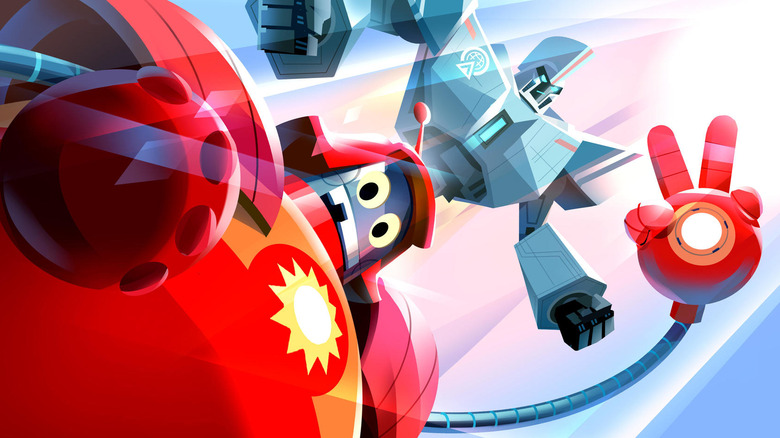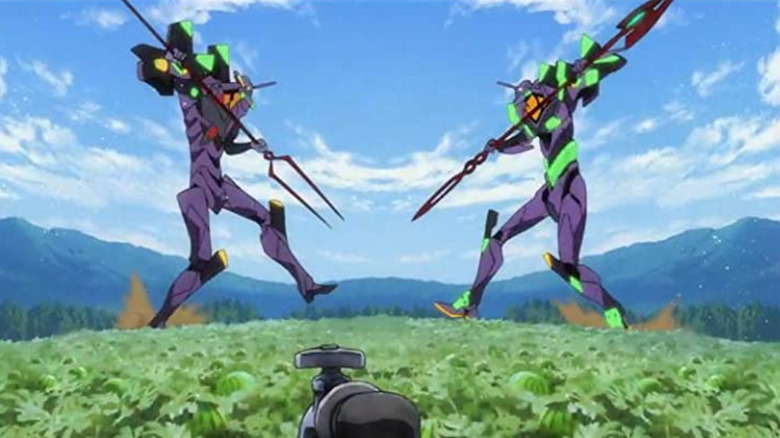How Video Game Engines Are Changing The Way Animation Is Made [Annecy]
The Annecy International Animation Film Festival is a mecca for animation fans, a place to see the latest films from around the world, to learn about new exciting projects, where the animation industry is, and also where it's going. Every major studio was on the ground at the French alpine town to talk about how they are focusing on diversity, creator-driven stories, and more experimentation with visual styles. Indeed, there is a lot to be excited and intrigued about when it comes to the future of the medium, not the genre.
But arguably the biggest actual change to the industry may not come from a new studio taking a few, calculated risks, or from an international production with a slightly different style. No, it will likely come from video games showing the animation industry a whole new way to tell stories. Even if the general audience doesn't fully notice the change, Epic Games was at Annecy to talk about using the Unreal Engine in animation, and the repercussions could be huge.
A streamlined process
While big productions like "The Mandalorian" have used video game engines before for visual effects, "Super Giant Robot Brothers" is the first project to be completely rendered inside a video game engine. The studio Reel FX TV show is an action-comedy about, well, two giant robot brothers, who are tasked with fighting kaiju that threaten to destroy the world. The trailer sells a fun action cartoon with good physical comedy, but what is most exciting about the show is its shot composition and camera movement. There's a sense of blocking, use of low angles, and lighting that looks more like what you'd find in live-action than in a cartoon.
The director of "Super Giant Robot Brothers," Mark Andrews, introduced the trailer and talked about the way Unreal Engine allowed for a streamlined process wherein a smaller team can work on the same project simultaneously, while also having more authorship over each stage of production. This stands in contrast with the current pipeline which is more of a loop, wherein a team works on one part of the project, then sends it off to another team, then it gets sent back again and again if any changes are needed. This creates a big need to communicate ideas clearly, which isn't always easy. During Genndy Tartakovsky's panel premiering the first episode of his show "Unicorn: Warriors Eternal," the director spoke of the struggle of translating his ideas into something he could communicate with the animation studio, who then adapt the ideas to the screen.
With Unreal Engine, however, every change, every addition can be shared with the entire animation team instantly, as it gets rendered in real-time. As Andrews said during the presentation, it allows everyone to be on the same page at all times, which eliminates the need for a back-and-forth, cutting costs, and the need for bigger teams micromanaging everything.
That allows for spontaneity
Animator Elizabeth Ito, who recently won a Peabody Award for her work in the cartoon "City of Ghosts" on Netflix, was also present at the panel to talk about using Unreal Engine for her upcoming documentary short film "Mall Stories." According to Ito, the engine allowed for something that is relatively simple in live-action but almost unheard of in animation — improvisation.
Because of how long it takes to produce animation, every single frame is meticulously planned out way in advance, meaning almost everything can be changed, but it takes forever to do so. With Unreal Engine, assets are rendered in real-time, meaning motion-capture performance is loaded onto a virtual set instantly, allowing for directors and cinematographers to manipulate the camera movement and build shots more quickly. For "Mall Stories," Ito wanted to capture the small moments of spontaneity that occur in day-to-day life, subtleties that a camera can capture, but an animator would have to think and take longer to draw.
Mark Andrews provided an example of this they used on "Super Giant Robot Brothers," where he was one day playing with the puppet robots they use for reference, and suddenly got an idea for a cool shot. Rather than scramble to write it down and send it to several teams so they can work on the simple shot for months, he told the animators and within minutes the shot was animated and ready.
Of course, the use of virtual sets where directors can plan out shots using live-action techniques isn't entirely new. Hideaki Anno used it for "Evangelion 3.0+1.0" to great effect, with scenes using elaborate camera angles and motion-capture to make the audience feel the tension of a scene, as the movements suddenly get more fluid than usual. Whether Unreal Engine will replace all animation pipelines remains to be seen, but the possibility of using technology to better translate a creator's vision is indeed a game-changer.
"Super Giant Robot Brothers" premieres August 4, 2022 on Netflix.

